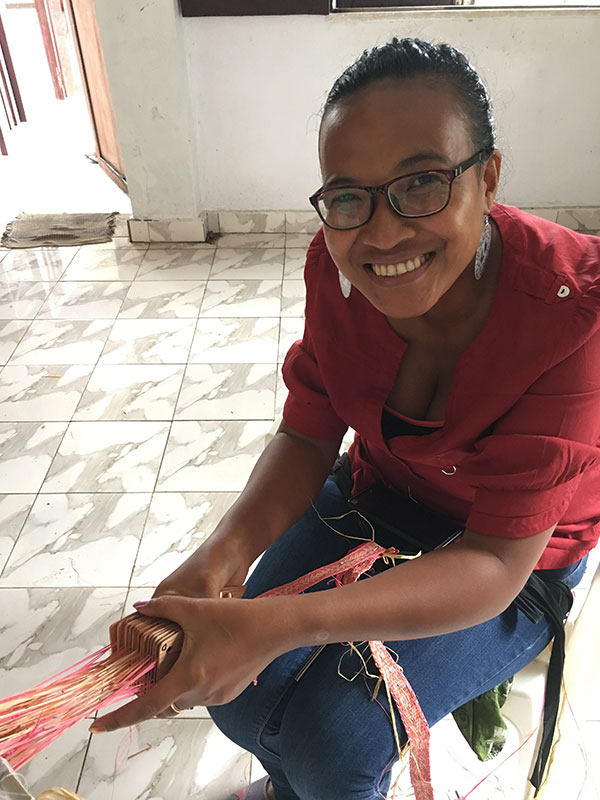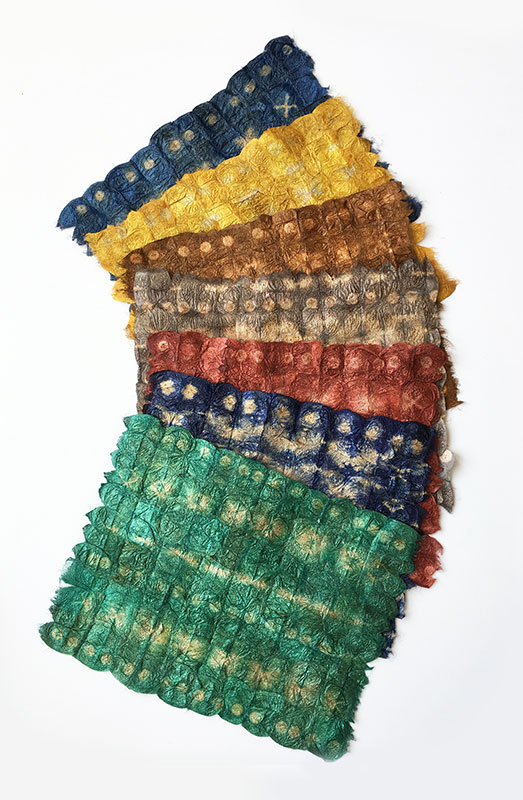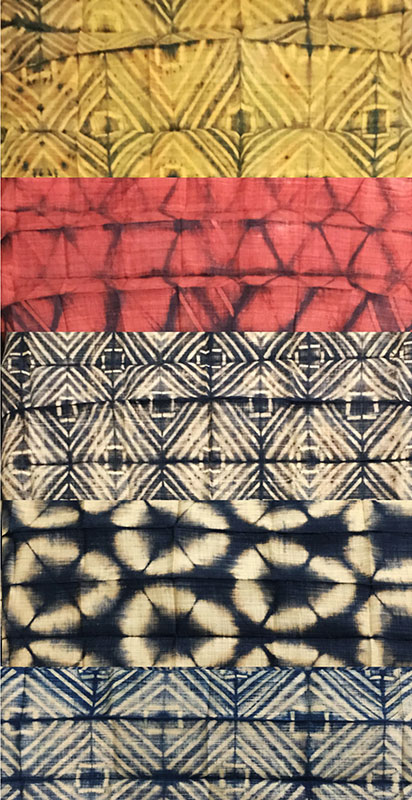Artist:
Lalaina Raharindimby
Region:
Country:
Organization:
Media/General:
Year(s) Attended:
About:
One example of Madagascar’s incredible biodiversity is its many types of silk moths, found in multiple habitats throughout the island. Traditionally, wild silk cocoons are collected, spun and woven into burial shrouds in the Madagascar highlands. The cocoons spun are variable in color, iridescence and size, but not all cocoons are large and dense enough to produce enough material to make the luxuriously soft textiles for which the country is known. In areas of Madagascar where silk weaving and spinning aren’t traditional, unusual strains of silk worms offer a new approach to textile production and income generation.
Mamy Ratsimbazafy founded Sepali Madagascar to expand cocoon production to additional species of silkworms—including long-forgotten habitats. The value was not in spun silk and woven textiles but in a new, uniquely designed silk that highlights cocoon diversity, the area from which the cocoon was collected, and Madagascar’s diverse biological wealth and heritage.
Each handmade item begins with the careful harvesting of wild silk cocoons, which are then washed, ironed and sewn together using transparent thread. A frequently used “zigzag stitch” mimics the movement of the caterpillar’s head when it constructs the cocoon and the result is a cocoon textile that appears as a continuous fabric. Items produced incorporate areas of drenched, rich colors, descending sometimes into delicate tassels or finished with expertly stitched hems. Sepali also employs shibori techniques, using leaves, sticks and string to create vibrant designs.
This work extends to multiple villages, each of which reflect their own unique environmental conditions. In addition to silk production, raffia is grown by local farmers and card weaving was introduced in a training workshop last year. Furthermore, Sepali supports traditional raffia weavers by purchasing their mats and dyeing them using innovative techniques and colors.





